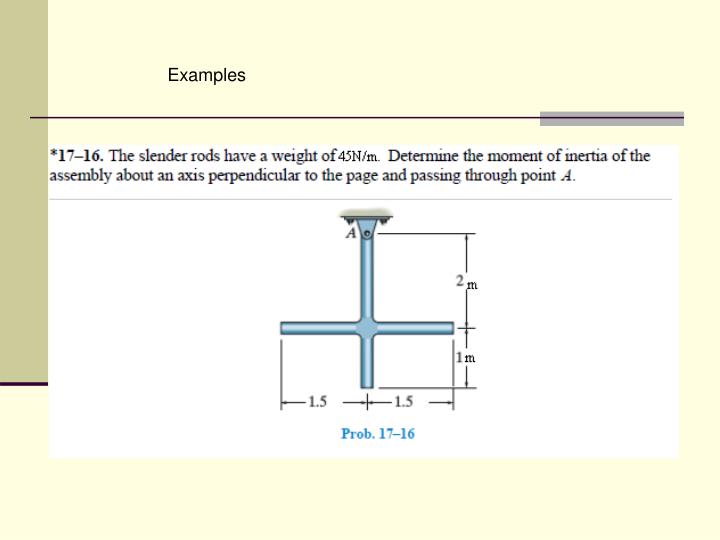
It is not always easy to do in your daily engineering work. Moment of Innertia for a Rectangular planeĮven though you can calculate (estimate) the moment of Inertia as you did for Arbitrary shape described above. If you apply mathematical tricks, you may extend this to integral form (I will leave this up to you for now) If you extend the two cases shown above to an extreme case, you can estimate the moment of the innertia of any arbitrary form by splitting the whole object into many, many small segments that are all tied to the origin of axis (O) as shown below.Īs you may easily guess, the moment of inertia of this shape can be described as shown below. In this case, three different masses are rotating around the same axis of rotation.Īssuming that all of the masses are rotating in the same direction, the moment of inertia of this whole system can be described as follows. Now let's extend the simplest case into a little bit complicated form as follows.


You can notice that the moment of Innertia is proportional to the mass m and the sqqure of distance between the rotational axis and the mass. The Moment of Inertia for this system can be described mathematically as follows. A mass connected to a string is rotating around a fixed point (O). To understand how the Moment of Inertia is described in a quantitative form, let's think of one of the simplest case as shown below.

Mass moment of inertia about the mass center can be applied for rigid body rotation about both fixed and translating axis. However, for most 3D figures, the magnitude of mass moment is also affected by the direction of the rotational axis of the rigid body. The shape and mass of a solid determines the magnitude of mass moment of inertia about the mass center of an object. Mass moment of inertia is a quantifiable property that determines the ability of a rigid body system to resist the change of the rotational speed about its pivot point.


 0 kommentar(er)
0 kommentar(er)
